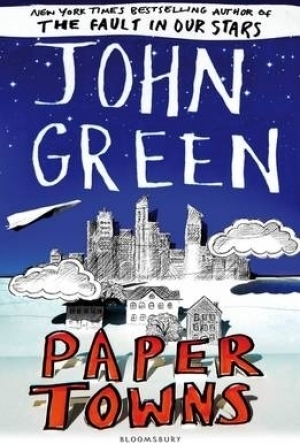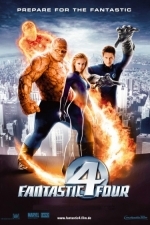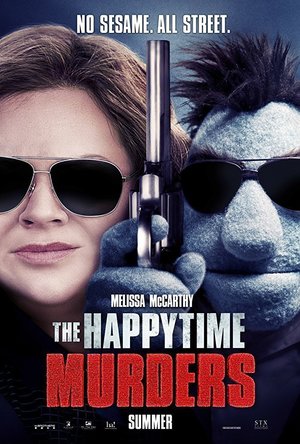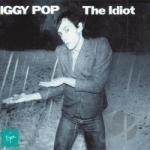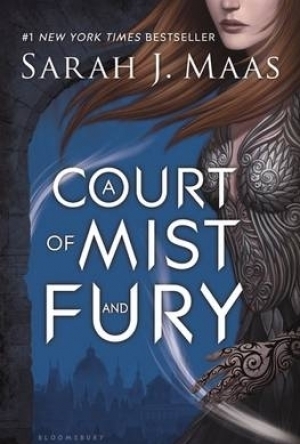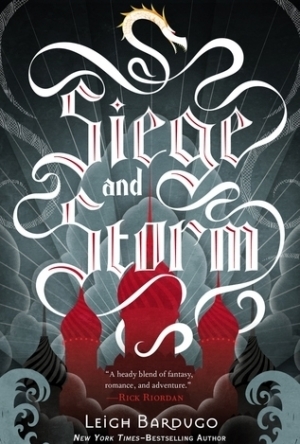Search
Hazel (1853 KP) rated Paper Towns in Books
May 30, 2017
John Green is such a good writer
Paper Towns is a brilliantly written novel by John Green. Having only previously read The Fault in our Stars I have little to compare it to and cannot say whether it is his best. I am writing this less that half an hour after finishing Paper Towns therefore it is still fresh in my mind, which may explain my slight preference over TFIOS. However the story lines are so different that it is not really fair to compare them.
Set in Orlando, Florida, Paper Towns is narrated by eighteen-year-old Quentin Jacobson (often referred to as Q). It begins with a flash back to when he and next door neighbour, Margo Roth Spiegelman, were nine and discovered a dead body in the park. It is here that the differences in character are pointed out: “As I took those two steps back, Margo took two equally small and quiet steps forward.” Q is an anxious boy, whereas Margo comes across as very confident.
Despite their childhood relationship, for the main bulk of the story Q and Margo have grown apart. They belong to different social circles: Margo to the popular crowd and Q with the gamers, band members and social outcasts. But things take a turn when one night Margo climbs through Q’s bedroom window and insists he accompany her on a nighttime adventure, going around righting wrongs and wronging rights.
But the next day Margo runs away telling no one where she is going, except it appears that she has left clues to her whereabouts. Clues only intended for Q to discover. With the help of his prom-obsessed friend, Ben; Radar, the guy whose parents own the world’s largest collection of black Santas (seriously, where does Green come up with this stuff?); and Lacey, Margo’s best friend and Ben’s soon to be girlfriend; Q struggles to understand the clues and uncover Margo’s hiding place.
To begin with it is exciting to read about Q and his friends unscrambling the hidden messages but as the story goes on and Margo is yet to be found a sense of dread creeps up on us and Q begins to think the worst.
The final section, however, is fast past and thrilling to read as the characters travel across states, with a rather short time limit, in Q’s mini van in a final attempt to find Margo. What will they find when they arrive? Will Margo still be there?
At first I was not sure that I would like this book. Chapter one is mostly about Quentin, Ben and Radar fooling around as boys do, but once everything kicks off with Margo it is really exciting. Similarly to The Fault in our Stars, Green has filled Paper Towns with clever metaphors with paper, string, balloons and grass being used to represent life. It is a very witty narrative containing lots of humour, yet also manages to convey important ideas about the way we see the world, and the people in it.
Paper Towns can be described as a contemporary, coming-of-age story. As mentioned already, Margo was portrayed as a confident girl whereas Quentin was the opposite. Despite Q stating “I wanted Margo’s disappearance to change me; but it hasn’t, not really” I think Green has shown major character developments, and possibly even role reversals. Q may never completely get rid of his anxieties and does not totally become a different person, but he does gain more confidence as he is forced out of his comfort zone, and his perception of other people also begins to alter. Margo on the other hand may not be all that she seems. The real Margo may in fact be a quiet, rather lost teen in a world she feels trapped in. I think this story and Q’s development has the potential to inspire others of similar ages and make all readers question things about themselves.
Overall, an exceptionally good read.
Set in Orlando, Florida, Paper Towns is narrated by eighteen-year-old Quentin Jacobson (often referred to as Q). It begins with a flash back to when he and next door neighbour, Margo Roth Spiegelman, were nine and discovered a dead body in the park. It is here that the differences in character are pointed out: “As I took those two steps back, Margo took two equally small and quiet steps forward.” Q is an anxious boy, whereas Margo comes across as very confident.
Despite their childhood relationship, for the main bulk of the story Q and Margo have grown apart. They belong to different social circles: Margo to the popular crowd and Q with the gamers, band members and social outcasts. But things take a turn when one night Margo climbs through Q’s bedroom window and insists he accompany her on a nighttime adventure, going around righting wrongs and wronging rights.
But the next day Margo runs away telling no one where she is going, except it appears that she has left clues to her whereabouts. Clues only intended for Q to discover. With the help of his prom-obsessed friend, Ben; Radar, the guy whose parents own the world’s largest collection of black Santas (seriously, where does Green come up with this stuff?); and Lacey, Margo’s best friend and Ben’s soon to be girlfriend; Q struggles to understand the clues and uncover Margo’s hiding place.
To begin with it is exciting to read about Q and his friends unscrambling the hidden messages but as the story goes on and Margo is yet to be found a sense of dread creeps up on us and Q begins to think the worst.
The final section, however, is fast past and thrilling to read as the characters travel across states, with a rather short time limit, in Q’s mini van in a final attempt to find Margo. What will they find when they arrive? Will Margo still be there?
At first I was not sure that I would like this book. Chapter one is mostly about Quentin, Ben and Radar fooling around as boys do, but once everything kicks off with Margo it is really exciting. Similarly to The Fault in our Stars, Green has filled Paper Towns with clever metaphors with paper, string, balloons and grass being used to represent life. It is a very witty narrative containing lots of humour, yet also manages to convey important ideas about the way we see the world, and the people in it.
Paper Towns can be described as a contemporary, coming-of-age story. As mentioned already, Margo was portrayed as a confident girl whereas Quentin was the opposite. Despite Q stating “I wanted Margo’s disappearance to change me; but it hasn’t, not really” I think Green has shown major character developments, and possibly even role reversals. Q may never completely get rid of his anxieties and does not totally become a different person, but he does gain more confidence as he is forced out of his comfort zone, and his perception of other people also begins to alter. Margo on the other hand may not be all that she seems. The real Margo may in fact be a quiet, rather lost teen in a world she feels trapped in. I think this story and Q’s development has the potential to inspire others of similar ages and make all readers question things about themselves.
Overall, an exceptionally good read.

MyKeto - Low Carb Keto Tracker
Health & Fitness and Reference
App
What is the Ketogenic Diet? The Ketogenic diet is a fast-growing low carbohydrate, high fat (lchf)...
Gareth von Kallenbach (980 KP) rated Fantastic Four (2005) in Movies
Aug 14, 2019
In 1994, a low budget film was created in order to preserve the film rights to one of Marvel Comics popular series The Fantastic 4. Created by comic legend Stan Lee, the comic tells the ongoing tales of four people who were endowed with amazing powers after accidental exposure to an element in space.
The film was never released and has gone on to become a popular bootleg amongst comic fans. The ensuing rights for the film were also sold, and for almost a decade Fox has worked in bringing the comic to the big screen.
After years of languishing, the film finally got on the fast track and under the helm of Director Tim Story and features a dynamic cast headed by some of the biggest emerging superstars in Hollywood.
Ioan Gruffudd stars as Reed Richards, a brilliant yet recently bankrupt scientist who, along with his friend Ben Grimm (Michael Chiklis), is visiting famed scientist Victor Von Doom (Julian Mc Mahon), in an effort to get his latest venture funded.
Reed is convinced that an approaching storm in space is the key to unlocking vast amounts of genetic secrets and that the shielding on Doom’s space station allows for safe study of the very rare phenomenon.
Doom agrees to the venture in exchange for 75% of all revenue generated from the findings and that he gets to assign certain people to the mission. Among them are Sue Storm (Jessica Alba), and her pilot brother Johnny (Chris Evans). The fact that Sue is Reed’s ex is a source of tension within the group, as she is obviously still hurt and bitter over Reed’s inability to look at her and life in ways that are not based upon analytical science.
Despite the issues, the crew arrives at the station and the test is going according to plan. That is until an unexpected situation arises, which causes the team to get caught in the storm with the shields lowered, exposing them all to the storm’s radiation.
Back on earth, the crew awakens to find themselves in quarantine and suffering no ill effects from the accident. The failure of the mission is of great concern for Doom. His investors are using this as a reason to pull their support, which in turn is causing his stock to drop rapidly.
In time, Reed, Sue, Johnny, and Ben start to show amazing abilities resulting from their exposure to the storm. Johnny can become a human fireball, Reed can stretch his body to amazing lengths, Sue can become invisible and project force fields, and Ben has become a living wall of rock, capable of great feats of strength.
Since Ben is no longer able to pass as a human, he feels like a freak and is shunned by his wife, causing him much anger and depression. It is due to this that the team becomes noticed by the media who dub them the Fantastic 4 after watching them in action.
The resulting fame causes the team to withdraw, save for Johnny who basks in the glory and attention heaped upon him. It is against this changing dynamic that the team must find a way to restore themselves to their normal state and to discover what is causing their new found abilities.
The Fantastic 4 are not the only ones who changed. Doom is becoming more and more angry and violent as he blames Reed for the failure of his company. Victor also has the ability to hurl deadly bolts of energy from his body which is quickly becoming metallic.
As fans of the comic know, it will not take long for Doom and the Fantastic 4 to face off, paving the way for a final confrontation. While I went in not expecting much from the film, I must say I was surprised. Yes, the film has a thin plot, and fairly basic characters and action, but it is also above all fun.
The dynamic between the characters is enjoyable, as is the humor which accurately captures the tone and feel of the comic. Some purists will take exception with some of the liberties taken, such as Doom being on the trip to space and other variations on his character which are not part of the original comic.
Alba and Evans tend to come off at times as airheads but they stay true to their characters throughout. Gruffudd plays Reed with modesty and charm that works well in the film and shows that he is a star on the rise. Praise should be heaped upon Chiklis and McMahon who could easily have become lost behind their costumes. Theygive very human and compelling performances. Chiklis captures the duality of Grimm as he battles his despair over his physical appearance with his desire to do what is right. McMahon does riveting work as the man pushed over the edge and becomes fueled by a desire for revenge and power. The fury and evil upon his face and in his walk shows him as a man of menace and danger.
I for one would have liked to have seen a bit more action in the film but as it stands, it is not as bad as some of the trailers hinted that it might be. If you do not mind thin plots and characters, you may be able to sit back and enjoy this film for what it is, a simple summer escape. Here is hoping that we will see the “Fantastic 4” up on the big screen as the next franchise series from Marvel.
The film was never released and has gone on to become a popular bootleg amongst comic fans. The ensuing rights for the film were also sold, and for almost a decade Fox has worked in bringing the comic to the big screen.
After years of languishing, the film finally got on the fast track and under the helm of Director Tim Story and features a dynamic cast headed by some of the biggest emerging superstars in Hollywood.
Ioan Gruffudd stars as Reed Richards, a brilliant yet recently bankrupt scientist who, along with his friend Ben Grimm (Michael Chiklis), is visiting famed scientist Victor Von Doom (Julian Mc Mahon), in an effort to get his latest venture funded.
Reed is convinced that an approaching storm in space is the key to unlocking vast amounts of genetic secrets and that the shielding on Doom’s space station allows for safe study of the very rare phenomenon.
Doom agrees to the venture in exchange for 75% of all revenue generated from the findings and that he gets to assign certain people to the mission. Among them are Sue Storm (Jessica Alba), and her pilot brother Johnny (Chris Evans). The fact that Sue is Reed’s ex is a source of tension within the group, as she is obviously still hurt and bitter over Reed’s inability to look at her and life in ways that are not based upon analytical science.
Despite the issues, the crew arrives at the station and the test is going according to plan. That is until an unexpected situation arises, which causes the team to get caught in the storm with the shields lowered, exposing them all to the storm’s radiation.
Back on earth, the crew awakens to find themselves in quarantine and suffering no ill effects from the accident. The failure of the mission is of great concern for Doom. His investors are using this as a reason to pull their support, which in turn is causing his stock to drop rapidly.
In time, Reed, Sue, Johnny, and Ben start to show amazing abilities resulting from their exposure to the storm. Johnny can become a human fireball, Reed can stretch his body to amazing lengths, Sue can become invisible and project force fields, and Ben has become a living wall of rock, capable of great feats of strength.
Since Ben is no longer able to pass as a human, he feels like a freak and is shunned by his wife, causing him much anger and depression. It is due to this that the team becomes noticed by the media who dub them the Fantastic 4 after watching them in action.
The resulting fame causes the team to withdraw, save for Johnny who basks in the glory and attention heaped upon him. It is against this changing dynamic that the team must find a way to restore themselves to their normal state and to discover what is causing their new found abilities.
The Fantastic 4 are not the only ones who changed. Doom is becoming more and more angry and violent as he blames Reed for the failure of his company. Victor also has the ability to hurl deadly bolts of energy from his body which is quickly becoming metallic.
As fans of the comic know, it will not take long for Doom and the Fantastic 4 to face off, paving the way for a final confrontation. While I went in not expecting much from the film, I must say I was surprised. Yes, the film has a thin plot, and fairly basic characters and action, but it is also above all fun.
The dynamic between the characters is enjoyable, as is the humor which accurately captures the tone and feel of the comic. Some purists will take exception with some of the liberties taken, such as Doom being on the trip to space and other variations on his character which are not part of the original comic.
Alba and Evans tend to come off at times as airheads but they stay true to their characters throughout. Gruffudd plays Reed with modesty and charm that works well in the film and shows that he is a star on the rise. Praise should be heaped upon Chiklis and McMahon who could easily have become lost behind their costumes. Theygive very human and compelling performances. Chiklis captures the duality of Grimm as he battles his despair over his physical appearance with his desire to do what is right. McMahon does riveting work as the man pushed over the edge and becomes fueled by a desire for revenge and power. The fury and evil upon his face and in his walk shows him as a man of menace and danger.
I for one would have liked to have seen a bit more action in the film but as it stands, it is not as bad as some of the trailers hinted that it might be. If you do not mind thin plots and characters, you may be able to sit back and enjoy this film for what it is, a simple summer escape. Here is hoping that we will see the “Fantastic 4” up on the big screen as the next franchise series from Marvel.
Steven Sklansky (231 KP) rated The Happytime Murders (2017) in Movies
Aug 23, 2018
Funny for a Puppet Movie
I did not go in to this movie with the highest of hopes but I came out with a big smile on my face. There were a lot of people that told me not to go to this movie, but I never listen to anyone and this is a good reason why. I try not to judge a movie by the trailer for the the big reason they never tell the whole story and you have to trust the person making the trailer. So I went anyway.
I am really glad I did because it was really funny from start to finish. I thought they would put in to much toilet humor and they didn't. What they did put in was well placed and fit the story line great. It was also kind of great seeing a different side to brutal murders. Without blood and guts they were able to be more creative with the killing and give you something very different.
I do have to give props to the puppeteers. At the end of the movie they showed some clips of behind the scenes and some of the things they had to do to get the shots looked difficult. Also how they shot the interactions with human puppet were done fantastic, It really did not look like CGI was used at all even though there was a lot.
Brian Henson did a great job writing the script. The use of humans vs puppets was done very well. It almost reminded me of a Who Framed Roger Rabbit type of movie. I almost thought at the end the killer was going to be a puppet in a human body. Wouldn't that have been a twist.
Buddy cop movies have always been a favorite of mine from Lethal Weapon to Bad Boys. This movie was right up there. I would say the best but it had its moments. I did think Melissa McCarthy wasn't going to be the choice, but she worked out. He type of humor did have place in this movie, although in some places it was over the top. All the puppet cast was really good. You mostly had human puppets but there were some animals thrown in the mix. I do with there were more monster puppets like Oscar the Grouch or Elmo. That would have been great.
Overall I think it is worth a watch if you like puppets and murder mysteries and don't mind the occasional sex joke. Until next time, enjoy the show.
I am really glad I did because it was really funny from start to finish. I thought they would put in to much toilet humor and they didn't. What they did put in was well placed and fit the story line great. It was also kind of great seeing a different side to brutal murders. Without blood and guts they were able to be more creative with the killing and give you something very different.
I do have to give props to the puppeteers. At the end of the movie they showed some clips of behind the scenes and some of the things they had to do to get the shots looked difficult. Also how they shot the interactions with human puppet were done fantastic, It really did not look like CGI was used at all even though there was a lot.
Brian Henson did a great job writing the script. The use of humans vs puppets was done very well. It almost reminded me of a Who Framed Roger Rabbit type of movie. I almost thought at the end the killer was going to be a puppet in a human body. Wouldn't that have been a twist.
Buddy cop movies have always been a favorite of mine from Lethal Weapon to Bad Boys. This movie was right up there. I would say the best but it had its moments. I did think Melissa McCarthy wasn't going to be the choice, but she worked out. He type of humor did have place in this movie, although in some places it was over the top. All the puppet cast was really good. You mostly had human puppets but there were some animals thrown in the mix. I do with there were more monster puppets like Oscar the Grouch or Elmo. That would have been great.
Overall I think it is worth a watch if you like puppets and murder mysteries and don't mind the occasional sex joke. Until next time, enjoy the show.

Home yoga practice
Health & Fitness and Lifestyle
App
What is preventing you from living your life to the fullest TODAY? Body aches? Stress? Your mood? ...
Faris Badwan recommended track Mass Production by Iggy Pop in Idiot by Iggy Pop in Music (curated)
Tayla (27 KP) rated A Court of Mist and Fury in Books
Jun 21, 2018
Characters (3 more)
Storyline
Action packed
Umm Everything?
Seriously. Amazing.
I put off starting A Court of Thorns and Roses because of vanity reasons (the cover just didn't do it for me, ok?!), but I fell in love with it immediately. I didn't even wait a second before starting A Court of Mist and Fury. Seriously. This series has become one my all time favorites. A Court of Mist and Fury is the continued story of Feyre. After being under the mountain she has found herself with a strange new body and a constant battle with the demons wrecking havoc in her mind. This book spends a good deal of time letting Feyre find herself and realize the good and toxic things in her life. As a threat looms ever closer, she learns to trust in herself and her abilities to become the curse breaker the all need.
The story is remarkable. I am always a little wary about the second books in series but this one far surpassed the first book. Sarah J Mass took an abusive relationship that we see all too often in books and turned it upside down. The sad part was I didn't even realize that it was an abusive relationship until I started into this book. I began to look back and pick out unhealthy parts to Feyre and Tamlin's relationship. I found myself giddy with delight as Feyre finds healthy relationships. I kept looking around as I was reading to see if anyone would notice the pure delight on my face (awkward..). The best part? The entire book moved so quickly I felt like I was sprinting to complete it. My emotions were on a rollercoaster the entire time. The author did a great job including scenes that provide a break from the chaos to let us catch our breath before diving right back in.
The characters really make this book. All the main women in this book are badasses. It is a breath of fresh air to see these women be more than a pretty face and hold their own. I also can't get over their friendship. It's clearly a true, bone deep friendship where the love is hard to miss. The night court men in this book are also refreshing. They will protect their friends family, but they are also aware that everyone is capable of taking care of themselves and each of them have their own strengths. I love the friendship and love between these characters.
The relationships had such tension in them it was impossible not to feel them. Apparently, fae do not do a good job of hiding how they feel about those they care about, and I am not complaining! I loved the relationship between Feyre and Rhys. Even from A Court of Thorns and Roses I wanted more interaction between the both of them. Although I couldn't tell what exactly was between them, I could feel the pull, the need to hear more of their story. Authors are amazing for being able to capture things like that! I do feel the need to note that there are some pretty heavy sex scenes in this book, significantly more than the first one. Maybe don't read out in public ;).
I loved a Court of Mist and Fury! I am a yelling at myself for not jumping on the bandwagon sooner. I highly recommend this book to everyone who likes magical fantasy books, books with strong female leads, books with a bit (ok a lot) of romance but in a healthy way, and an effortless read.
The story is remarkable. I am always a little wary about the second books in series but this one far surpassed the first book. Sarah J Mass took an abusive relationship that we see all too often in books and turned it upside down. The sad part was I didn't even realize that it was an abusive relationship until I started into this book. I began to look back and pick out unhealthy parts to Feyre and Tamlin's relationship. I found myself giddy with delight as Feyre finds healthy relationships. I kept looking around as I was reading to see if anyone would notice the pure delight on my face (awkward..). The best part? The entire book moved so quickly I felt like I was sprinting to complete it. My emotions were on a rollercoaster the entire time. The author did a great job including scenes that provide a break from the chaos to let us catch our breath before diving right back in.
The characters really make this book. All the main women in this book are badasses. It is a breath of fresh air to see these women be more than a pretty face and hold their own. I also can't get over their friendship. It's clearly a true, bone deep friendship where the love is hard to miss. The night court men in this book are also refreshing. They will protect their friends family, but they are also aware that everyone is capable of taking care of themselves and each of them have their own strengths. I love the friendship and love between these characters.
The relationships had such tension in them it was impossible not to feel them. Apparently, fae do not do a good job of hiding how they feel about those they care about, and I am not complaining! I loved the relationship between Feyre and Rhys. Even from A Court of Thorns and Roses I wanted more interaction between the both of them. Although I couldn't tell what exactly was between them, I could feel the pull, the need to hear more of their story. Authors are amazing for being able to capture things like that! I do feel the need to note that there are some pretty heavy sex scenes in this book, significantly more than the first one. Maybe don't read out in public ;).
I loved a Court of Mist and Fury! I am a yelling at myself for not jumping on the bandwagon sooner. I highly recommend this book to everyone who likes magical fantasy books, books with strong female leads, books with a bit (ok a lot) of romance but in a healthy way, and an effortless read.
Lucy Buglass (45 KP) rated Venom (2018) in Movies
Jun 20, 2019
It’s not as bad as you might think…
It feels like everyone has something to say about Venom. Amongst critics and fans, it’s caused a lot of debate and controversy. Whenever this happens, I tend to find myself becoming even more curious about the film because if everyone else has strong words to say, maybe I will too?
Before I begin my review I just want to put in a quick disclaimer: I am by no means a comic book expert, and I don’t claim to be Marvel’s number one fan. If anything I’m a casual fan. So this review is coming from the mind of a film lover and nothing more. Now that’s out of the way…
Venom was quick to grab my attention when it was first announced, as I’m always interested when Marvel move into darker, grittier territories. I have a soft spot for villains and Venom’s character is definitely one of the coolest ones in the franchise. There are few things scarier than the thought of a parasite taking over your body, so the horror elements definitely drew me towards the film. Visually, Venom does utilise things we would associate with horror, such as long, lingering shots and sudden jumpy moments. Whilst they’re nothing new or particularly outstanding, I did enjoy this side to the film. Symbiotes as a concept are terrifying, so it only seemed fair to portray them in this way.
Tom Hardy gives a great performance as Eddie Brock, especially during his interactions with Venom. The comedic side to this film was genuinely funny, and gave the audience some light relief after the more horrifying scenes. This dynamic between Eddie and Venom is what really stood out to me, as they owned the vast majority of screen time and had to keep the audience entertained. For me, it worked and it had some serious laugh-out-loud moments.
Some of the scenes are a bit ridiculous, but I’ve quickly learned to expect a bit of implausibility when it comes to comic book movies. I wasn’t bothered by some of the sillier scenes, though I can see why someone would want to criticise them. The one thing I was bothered by, however, was the plot holes and confusing lines within the film that, so I felt this did weaken the script in places. I’m certainly in agreement that the writing was lazy overall. Nonetheless, I was still entertained by 90% of the film and I don’t think that’s a bad thing. The action scenes were fun, chaotic, and made even better by Venom’s presence inside Eddie’s head. Without that, I might not have enjoyed them as much.
I liked the visual effects throughout the film, and was particularly creeped out by the way the symbiote looked before it finds a host. The scenes set within The Life Foundation’s facility stood out to me, reminiscent of other films where science ‘goes wrong’. It’s clinical, confusing and isolating, making you feel just as uncomfortable and scared as those undergoing the trials. I really enjoyed the twisted side to this narrative, showing us a dark side to corporations as films often do.
Is Venom the best film I’ve seen this year? Of course it’s not. But it was a fun way to spend 2 hours on a Sunday evening and that’s good enough for me. It’s a very average, very three star film that kept me entertained. It’s nothing more than that, and to me, that’s okay.
https://lucygoestohollywood.com/2018/10/14/venom-its-not-as-bad-as-you-might-think/
Before I begin my review I just want to put in a quick disclaimer: I am by no means a comic book expert, and I don’t claim to be Marvel’s number one fan. If anything I’m a casual fan. So this review is coming from the mind of a film lover and nothing more. Now that’s out of the way…
Venom was quick to grab my attention when it was first announced, as I’m always interested when Marvel move into darker, grittier territories. I have a soft spot for villains and Venom’s character is definitely one of the coolest ones in the franchise. There are few things scarier than the thought of a parasite taking over your body, so the horror elements definitely drew me towards the film. Visually, Venom does utilise things we would associate with horror, such as long, lingering shots and sudden jumpy moments. Whilst they’re nothing new or particularly outstanding, I did enjoy this side to the film. Symbiotes as a concept are terrifying, so it only seemed fair to portray them in this way.
Tom Hardy gives a great performance as Eddie Brock, especially during his interactions with Venom. The comedic side to this film was genuinely funny, and gave the audience some light relief after the more horrifying scenes. This dynamic between Eddie and Venom is what really stood out to me, as they owned the vast majority of screen time and had to keep the audience entertained. For me, it worked and it had some serious laugh-out-loud moments.
Some of the scenes are a bit ridiculous, but I’ve quickly learned to expect a bit of implausibility when it comes to comic book movies. I wasn’t bothered by some of the sillier scenes, though I can see why someone would want to criticise them. The one thing I was bothered by, however, was the plot holes and confusing lines within the film that, so I felt this did weaken the script in places. I’m certainly in agreement that the writing was lazy overall. Nonetheless, I was still entertained by 90% of the film and I don’t think that’s a bad thing. The action scenes were fun, chaotic, and made even better by Venom’s presence inside Eddie’s head. Without that, I might not have enjoyed them as much.
I liked the visual effects throughout the film, and was particularly creeped out by the way the symbiote looked before it finds a host. The scenes set within The Life Foundation’s facility stood out to me, reminiscent of other films where science ‘goes wrong’. It’s clinical, confusing and isolating, making you feel just as uncomfortable and scared as those undergoing the trials. I really enjoyed the twisted side to this narrative, showing us a dark side to corporations as films often do.
Is Venom the best film I’ve seen this year? Of course it’s not. But it was a fun way to spend 2 hours on a Sunday evening and that’s good enough for me. It’s a very average, very three star film that kept me entertained. It’s nothing more than that, and to me, that’s okay.
https://lucygoestohollywood.com/2018/10/14/venom-its-not-as-bad-as-you-might-think/
Becs (244 KP) rated Siege and Storm in Books
Aug 25, 2019
Nikolai (2 more)
the Darkling
THAT ENDING
has major middle book syndrome (3 more)
main character is still annoying
mal is still a horrible character
there wasn't a lot of the Darkling when the books are supposed to be about him as a villain
Has middle book syndrome B A D but the last half of the book is great!
You can also find this review on my blog: bookingwayreads.wordpress.com
TRIGGER WARNINGS: torture, murder, war themes, hallucinations, death, blood, manipulation, violence
Review:
I originally rated this 4 out of 5 stars but I am dropping it down to 3.5 out of 5 stars as I’ve had a lot of time to think about my review and have realized that Siege and Storm has middle book syndrome.
My one problem with Siege and Storm, is that it needed more of the Darkling in it. The Shadow and Bone Trilogy is about the Darkling being the villain and Siege and Storm did not deliver. You’d think there would have been more of a prescense, but there was just not enough of him! Please take Mal away and replace him with the Darkling!! Also, what in the good lordy fucks was that ending Leigh?! ARE YOU TRYING TO KILL US!? I. AM. DEAD.
I still have an ever growing dislike for Mal. He doesn’t have one bit of empathy in his body and it’s so frustrating! Like he’s supposed to be that rock that Alina can fall back onto for support and he’s just being a douche about her having powers. Can we just replace all of Mal’s scenes with more of my BB’s Nikolai and the Darkling plz?! Nikolai had the best character development and was the most relatable in the entire series thus far.
I’ve not really grown to like Alina as much like others do, as she’s still the same annoying girl that I wish wasn’t as special as she is. One thing I do like about her though, is the whole anti hero darkness she has brewing along with the inner turmoil she’s dealing with. With her new found power enhancements, but I just wish her powers weren’t vaguely talked about.
Another thing I wasn’t entirely a fan of was the love triangle *cough cough* love SQUARE *cough cough* trope that took place throughout the novel. Don’t get me wrong, it was extremely well-written and really filled in some (read: a lot of the) boring parts. BUT, this trope is extremely overrated and can really ruin a novel. It was rather annoying that Alina had all of these men to choose from and she couldn’t make up her mind about any of them. Plus, I don’t think she deserves any of them. So… yea.
Okay, onto the story itself. The first half was… such… a… bore… It was so freaking slow and I wanted to give up on it so much. It also kind of put me into a slump on picking up Ruin and Rising. I just didn’t want to be disappointed like I was with Siege and Storm. The second half of the story on the other hand, was packed to the max with intense scenes and action. I honestly thought my wittle heart would crack into a million pieces.
Leigh’s writing style is extremely unique and well-done. She’s able to write scenes that not only grip your attention, but will also pluck each heart string until that breaking point. Then it will rip your heart out of your chest with one swift moment.
Other than a few bumps, Siege and Storm was captivating to a point, but not as much as Shadow and Bone. It’s a soul sucker of a book and I’m enamored with it. The world-building is some of the best I’ve ever seen, especially for a series. The tensions in scenes is extremely palpable – making this a great sequel to an amazing series.
“You know the problem with heroes and saints Nikolai? They always end up dead.
TRIGGER WARNINGS: torture, murder, war themes, hallucinations, death, blood, manipulation, violence
Review:
I originally rated this 4 out of 5 stars but I am dropping it down to 3.5 out of 5 stars as I’ve had a lot of time to think about my review and have realized that Siege and Storm has middle book syndrome.
My one problem with Siege and Storm, is that it needed more of the Darkling in it. The Shadow and Bone Trilogy is about the Darkling being the villain and Siege and Storm did not deliver. You’d think there would have been more of a prescense, but there was just not enough of him! Please take Mal away and replace him with the Darkling!! Also, what in the good lordy fucks was that ending Leigh?! ARE YOU TRYING TO KILL US!? I. AM. DEAD.
I still have an ever growing dislike for Mal. He doesn’t have one bit of empathy in his body and it’s so frustrating! Like he’s supposed to be that rock that Alina can fall back onto for support and he’s just being a douche about her having powers. Can we just replace all of Mal’s scenes with more of my BB’s Nikolai and the Darkling plz?! Nikolai had the best character development and was the most relatable in the entire series thus far.
I’ve not really grown to like Alina as much like others do, as she’s still the same annoying girl that I wish wasn’t as special as she is. One thing I do like about her though, is the whole anti hero darkness she has brewing along with the inner turmoil she’s dealing with. With her new found power enhancements, but I just wish her powers weren’t vaguely talked about.
Another thing I wasn’t entirely a fan of was the love triangle *cough cough* love SQUARE *cough cough* trope that took place throughout the novel. Don’t get me wrong, it was extremely well-written and really filled in some (read: a lot of the) boring parts. BUT, this trope is extremely overrated and can really ruin a novel. It was rather annoying that Alina had all of these men to choose from and she couldn’t make up her mind about any of them. Plus, I don’t think she deserves any of them. So… yea.
Okay, onto the story itself. The first half was… such… a… bore… It was so freaking slow and I wanted to give up on it so much. It also kind of put me into a slump on picking up Ruin and Rising. I just didn’t want to be disappointed like I was with Siege and Storm. The second half of the story on the other hand, was packed to the max with intense scenes and action. I honestly thought my wittle heart would crack into a million pieces.
Leigh’s writing style is extremely unique and well-done. She’s able to write scenes that not only grip your attention, but will also pluck each heart string until that breaking point. Then it will rip your heart out of your chest with one swift moment.
Other than a few bumps, Siege and Storm was captivating to a point, but not as much as Shadow and Bone. It’s a soul sucker of a book and I’m enamored with it. The world-building is some of the best I’ve ever seen, especially for a series. The tensions in scenes is extremely palpable – making this a great sequel to an amazing series.
“You know the problem with heroes and saints Nikolai? They always end up dead.

AikidoGuide
Sports and Education
App
THE AIKIDO GUIDE is a powerful tool that fully utilizes app technology to give a unique learning...
